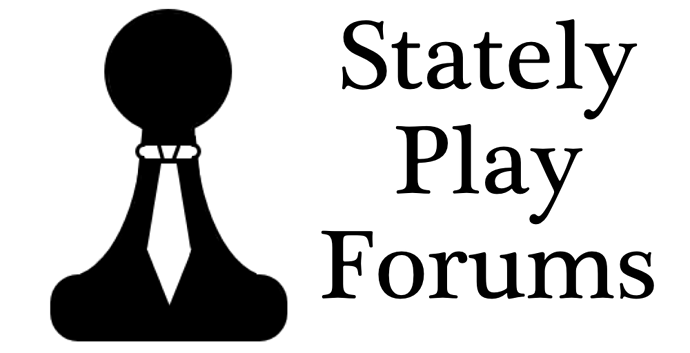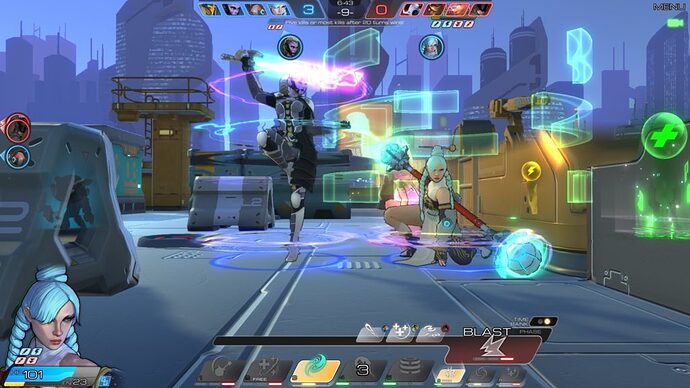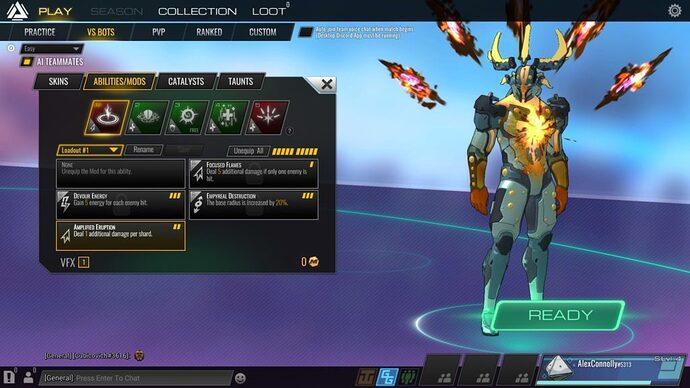Originally published at: http://statelyplay.com/2016/11/14/review-atlas-reactor/
Describing Atlas Reactor (and why it’s all sorts of fantastic) is a tall order. It leads to a tumult of clumsy ‘…like x, but with a twist of y’ equations that are never as helpful as they are clever, and lead to some pretty average approximations. The best I’ve managed is a supercilious ‘multiplayer turn-based strategy for the Overwatch generation’. Thing is, it totally is. Now released, I can emphatically suggest it as strategy front runner for any serious GOTY discussion.
Here WEGO.
On intimate grids, two four-strong teams plot the movement and actions of their single character in twenty-second intervals. The actions – attacks, buffs and effects, circumstantial positioning and the like – fall into three discrete, sequential categories. After all players have selected their skills and destinations, the round detonates like American football.
Opening actions fall into the Prep phase. Skills in this section usually refer to buffs, debuffs and trap-setting. Support characters are often most active in Prep, arming and healing their comrades before the clashes in Dash and Blast.
Dash is a specialised movement phase that requires specific repositioning or attacks to be used. These are usually offensive skills that couple an attack with often short-range movement. My favourite character, Elle, can combat roll in the Dash phase, then fire immediately from her new position. When you begin to understand the benefits of reading and feinting, the Dash phase is crucial.
[caption id=“attachment_309” align=“aligncenter” width=“1024”]
No funny caption for this one either. It’s Monday.[/caption]Blast is a regular attack phase, followed by the concluding round movement phase. Each attack made on an enemy feeds into a character’s energy tally. Once the meter hits one hundred, a hero’s ultimate action can be unleashed. Coupled with buffs and catalysts, these are either incredibly devastating to the opposing team, or a salvation to your own, depending on the class and skill.
The phase system isn’t complicated once you wrap your head around it. Characters take superficial turns in the Prep and Blast phases, but in truth, every hero’s actions and damage are calculated regardless. No player is robbed of doing damage prior to their death. It has been a source of befuddlement for many, including yours truly once upon a time, as to ‘who goes first?!’ and ‘what dictates order?!’, but if you make a hit, you’ll do your damage – regardless of whether you get sidelined for a respawn.
Heroes aren’t locked to their factory skill set, either. Through levelling and upgrading, each of the current twenty-three characters feature a highly customisable action load out. Every action has its inherent costs, such as usage cool-down. Actions can also be augmented and offset by selectable catalysts. These are single-use boosters like damage enhancement or teleport rip cords. Atlas Reactor also features a slew of costumes and other cosmetic elements to unlock through loot boxes. These form the reward structure for leveling characters and completing challenges.
The characters themselves are varied and pretty damn creative. It’s a tough ask to appear unique in a medium clawing for your allegiance, and while Atlas Reactor does have more elbow room beyond MOBAs and hero shooters, its cavalcade of snipers, robots, gunslingers and deities all feel distinct and wonderfully realised. Dr. Finn is a biomechanical eel, strutting about in a bipedal suit to compensate for his anguillian shortcomings. Oz, another droid, deploys a fresh doppleganger at every previous location, with his proclivity for lasers turning every attack into a two-part sting. You’ve got mutants, gods and soldiers of both genders, each touting combat proficiences that rarely overlap.
[caption id=“attachment_310” align=“aligncenter” width=“1024”]
Something about Sauron…nope, can’t do it. We welcome caption suggestions in the comments.[/caption]Trion Worlds’ simultaneous turn-based multiplayer game is a bit of an anomaly. A four-versus-four WEGO multiplayer game shouldn’t work this well. Parceling decision-making into twenty-second blocks, segmenting actions into four distinct rounds per turn, having three classes of character work cohesively; Atlas Reactor should be an utter mess, particularly in public matchmaking.
But in the short, explosive matches, everything feels highly tuned and impressively accommodating. Attacks ripple and shimmer, every action a curt, satisfying pyrotechnic showcase. Atlas Reactor is a success because it shucks the oft-glacial pace reserved for turn-based strategy without sacrificing the associated decision-making. Whether you’re happy just to churn about with the competent bots or take the fight online, Atlas Reactor is served equally well as a clipped one-off bedtime story or a heavy dawnward binge. If awarded solely on time spent this year, 2016 would belong to Atlas Reactor in this house. But that’s largely comprised of nightly non-negotiables; a snappy fight to settle the nerves and see the day off satisfied.
Atlas Reactor sounds great, but it plays even better. One of the year’s best.


